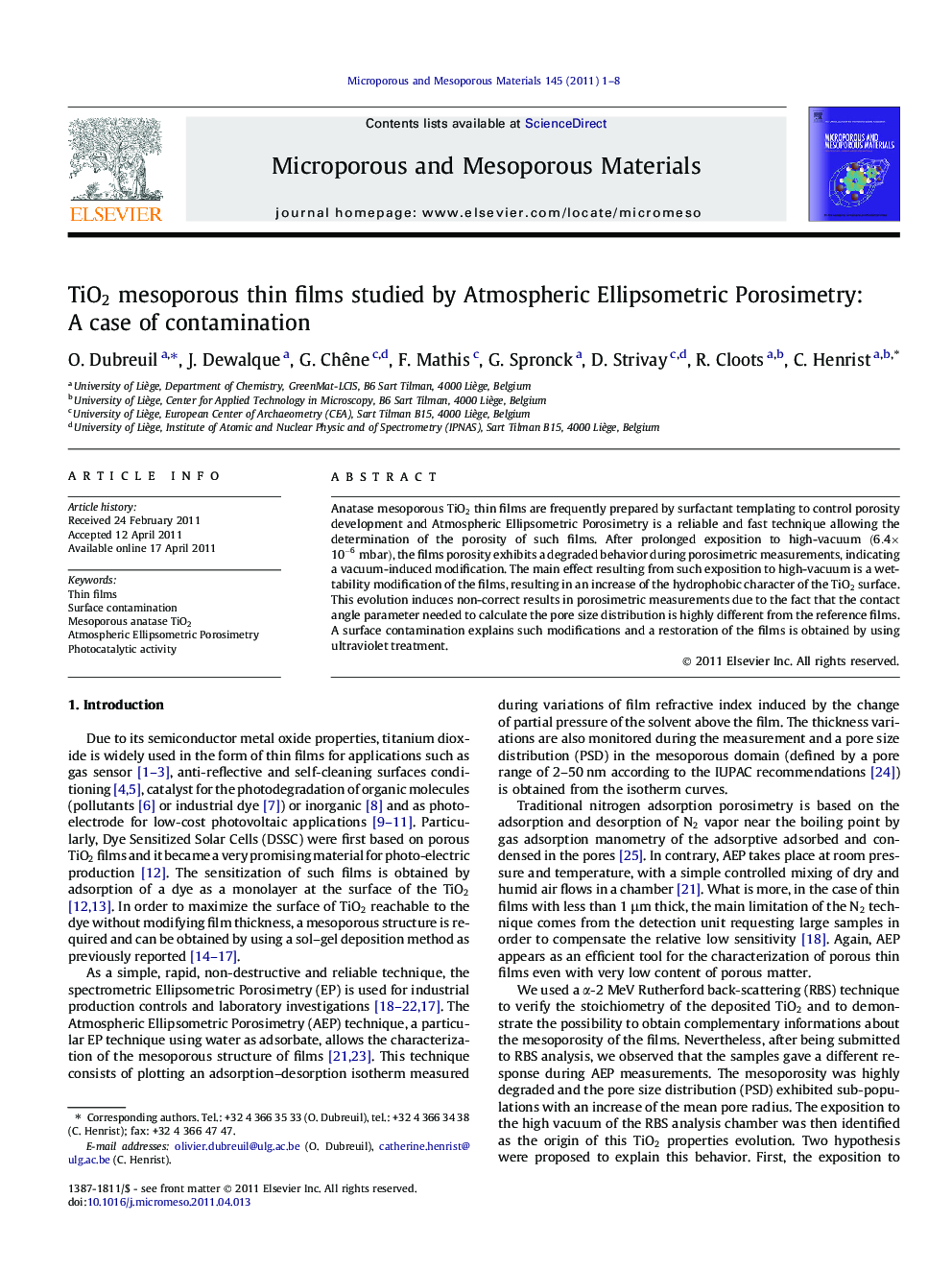| Article ID | Journal | Published Year | Pages | File Type |
|---|---|---|---|---|
| 74283 | Microporous and Mesoporous Materials | 2011 | 8 Pages |
Anatase mesoporous TiO2TiO2 thin films are frequently prepared by surfactant templating to control porosity development and Atmospheric Ellipsometric Porosimetry is a reliable and fast technique allowing the determination of the porosity of such films. After prolonged exposition to high-vacuum (6.4×10-6mbar), the films porosity exhibits a degraded behavior during porosimetric measurements, indicating a vacuum-induced modification. The main effect resulting from such exposition to high-vacuum is a wettability modification of the films, resulting in an increase of the hydrophobic character of the TiO2TiO2 surface. This evolution induces non-correct results in porosimetric measurements due to the fact that the contact angle parameter needed to calculate the pore size distribution is highly different from the reference films. A surface contamination explains such modifications and a restoration of the films is obtained by using ultraviolet treatment.
Graphical abstractFigure optionsDownload full-size imageDownload as PowerPoint slideHighlights►Anatase Titania mesoporous thin films studied by AEP. ► Mesoporous thin films sensitive to vacuum-induced modifications. ► Vacuum-induced surface contamination, properties restoration using UV irradiations. ► Uncommon porosimetric results explained by properties of Titania and AEP technique.
